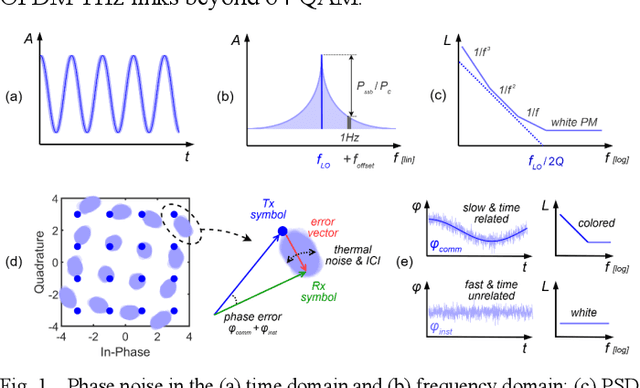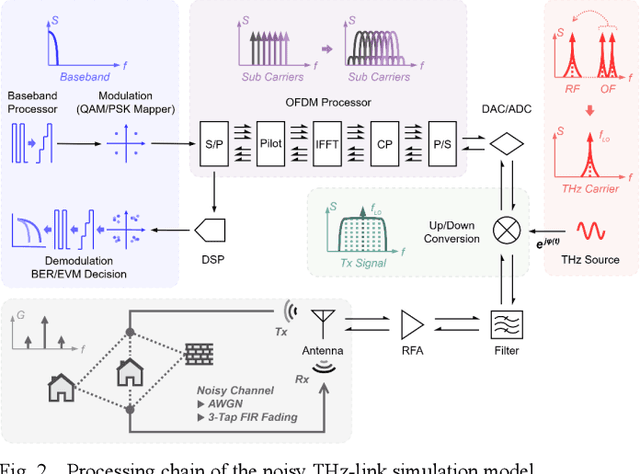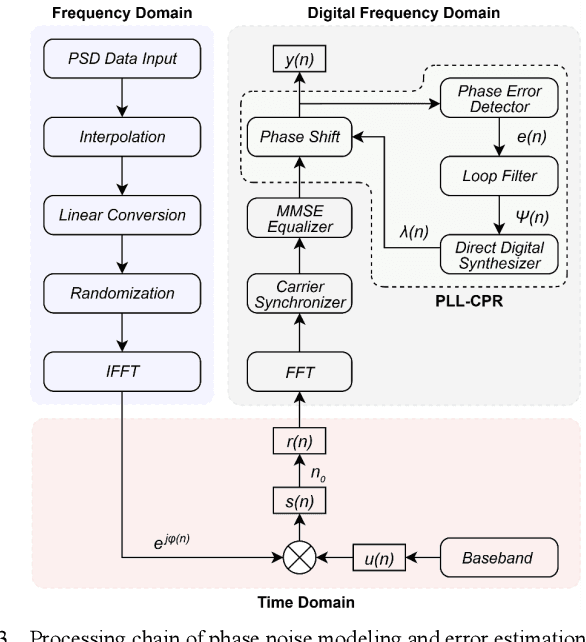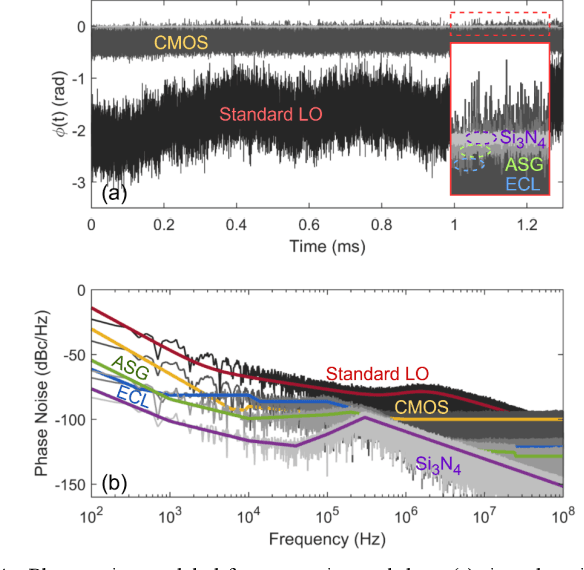Takasumi Tanabe
Phase Noise Tolerance for Low-Pilot-Overhead OFDM Terahertz Links Beyond 64-QAM
Aug 07, 2025



Abstract:THz wireless communications have garnered significant attention due to their unprecedented data rates enabled by the abundant untapped spectrum. However, advanced modulation formats beyond 64-QAM remain largely unexplored, as phase errors introduced during up/down-conversion severely limit system performance. Particularly, OFDM transmission is highly susceptible to aggravated ICI induced by phase noise, undermining the orthogonality of subcarriers. While PLLs and pilot-assisted compensation can mitigate phase errors, excessive pilot overhead compromises spectral efficiency and energy consumption, and white phase noise remains unrecoverable. Therefore, quantifying phase noise tolerance is essential for practical physical layer protocols. Here, we reveal the impact of phase noise in a 64-QAM, 2048-subcarrier OFDM THz transmission system. 3{\sigma}-error estimation is proposed to quantify phase noise tolerance, indicating an intuitive EVM threshold of approximately 5%. This threshold further delineates the trade-offs among phase noise levels, SNR requirements, and pilot overhead. Moreover, by benchmarking representative oscillators with distinct phase noise spectra, microring resonators (MRRs) are identified as indispensable enablers for low-pilot-overhead OFDM THz links operating beyond 64-QAM.
 Add to Chrome
Add to Chrome Add to Firefox
Add to Firefox Add to Edge
Add to Edge